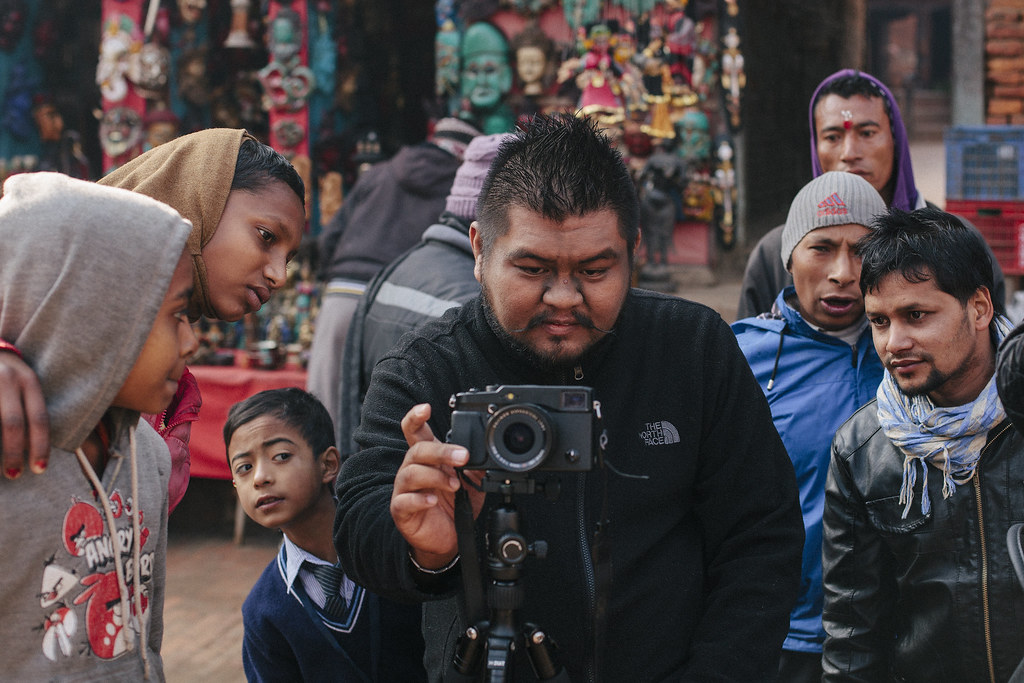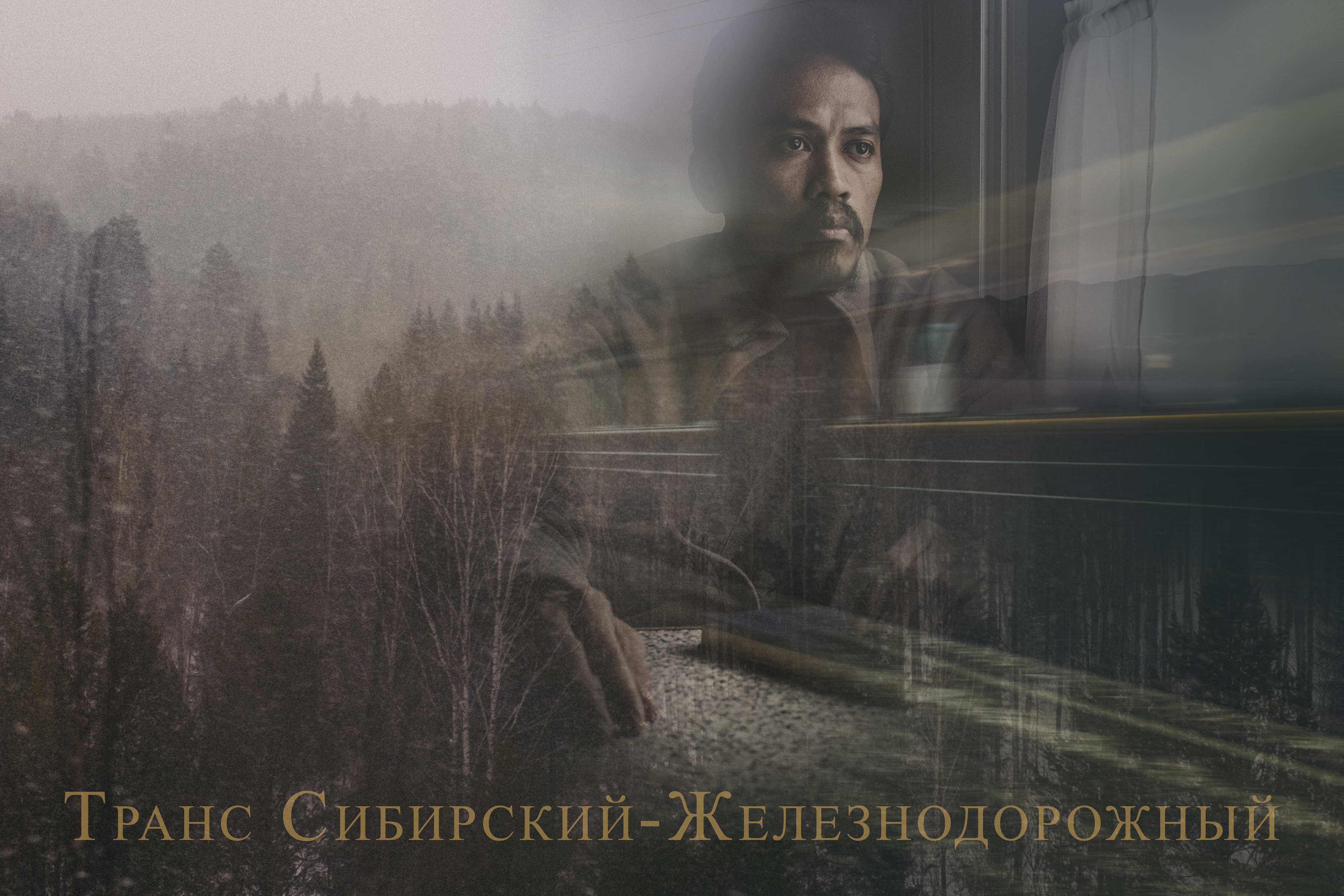Travel Photography | Which Lens is Best for Travel Photography?
© 2014 Wazari Wazir | Photographer Shukur Jahar Surrounded By Curious Onlooker at Bhaktapur | Nepal
“Photographers like Cartier-Bresson would only use one or two lenses, and work mostly in available light. I think the simplicity in this approach creates a timeless quality. To focus overly on the technical approach detracts from the power of the image in its own right.”
– Steve McCurry –
First thing first, are you hoping to become the next legendary National Geographic Photographer, Steve McCurry? If you have no idea who the hell he is, and have to Google his name, I think it’s going to be hard for you. Anyway Steve McCurry is not the greatest travel photographer of all time but surely he is among the most talk about when we talk about travel photography.
The Photograph of Afghanistan girl named Sharbat Gula, which made the front page of National Geographic magazine for June 1985 issue is what made him famous. Just for your information the Afghan Girl photograph were taken in December 1984 in a refugee camp near Peshawar, Pakistan. He was using a Nikon FM2 camera with a Nikkor 105mm F2.5 lens.
Okay, did I just answer your question? Go and get the 105 mm lens and voila! You’re next Steve McCurry, congratulations. Anyway, it is not that easy, one thing that you must be remember is that they did not become travel photographer overnight, most of travel photographer that I knew or have read about them have passion for traveling. They did not travel because they want to become travel photographer, they travel because they like to see the world.
There is no straight answer about which lens is best for travel photography, but to make it easy I just wanted to narrow it down to just two type of travel photography, the one is those who like to take a photograph of landmark, building and landscape, human interest does not interest them, the other one is those who travel like Steve McCurry or Mike Yamashita, which mainly focus on human interest, they do take a photograph of landscape, a great landmark but that is not their main subject.
Once you know what really interest you, then thing will get a little bit easier, if you wanted to focus more on landscape, landmark, building, like Taj Mahal in India or Ayasofya in Istanbul or a beautiful farm in Tuscany Italy, then you need to have a wide angle lens, something from 10 – 24 mm, you need to have UWA lens or Ultra Wide Angle Lens, “Ultra” means wider than normal wide angle lens that most people refer to which is 35 mm on full frame body.
Why you need UWA lens? Simply because in a certain places, a normal wide angle lens like 35 mm just is not enough, some beautiful place or landmark are located at cramped space, if you only have normal wide angle lens, you might not be able to photograph the landmark fully, only part of it and people who look at it, have a hard time to guess, what photograph is that, or what is that place. Having an ultra wide angle lens will widen your choice, more room for creative composition.
Next, for those of you who like photographing “Human Interest” portrait, environmental portrait and something like that. For this type of photographer, having an UWA Lens is not a must. Some people who are quite shy to approach a stranger, prefer to have 70-200 mm lens with them. They like to photograph people from afar and they tried best not to talk to stranger. 70-200 mm has its place when traveling especially in a situation when you wanted to get a close up shot of the subject or person but you can’t get close to them physically, for example in a situation where you wanted to get a close up shot of a Bali dancers while she perform her dance, you cannot simple walk close to her and get your shot, someone might get angry for blocking their view.
But, to be really great at travel photography, you must be willing to interact with local, some of the great travel photographers that I know like Mitchell Kanashkevich. lately have tried and use Fujifilm X100s with fixed 23 mm lens attach which is equivalent to 35 mm focal length in full frame camera and he produced great picture just like when he used his Canon 5D Mark III.
By this time, I think some of you, especially newbie, get confused, after spending few minutes reading this post, you don’t get the answer that you are hoping for. Here’s the thing, you can’t become travel photographer overnight and the only sure things to know which lens is suitable for travel photography based on your preferred genre, be it human interest or landscape is to travel often.
If you travel often, you will know or what interest you the most and you will know which lens is best for any particular place or situation, experience will teach you. For the time being, my advice is just to use whatever lens that you have and make full use of it.
Another travel photographer that I like is Oded Wagenstain, wrote in his blog that when he start photography as a hobby, he just use old fixed 28 mm lens that his brother gave him, with that lens he taught himself to work with what he have and at the same time learned how to photograph people from a close distance and until now, the ability for him to shoot people up close become his style.
We must start somewhere with what we have, nobody buy a camera today and become the best photographers next day or week. It take years to learn photography and it take years also to master the equipment that you have.
If you have a camera and have the time and money to travel the world, you are a few of a lucky people than those who have a camera but can’t travel for whatever reason only known to them.
Back to the question above, Which Lens is Best for Travel Photography? You can only find an honest, unbiased answer yourself by traveling, I’m not talking about the optical quality of a certain lenses here, I’m talking about the best focal length, about the optical quality, that’s another story.
For me, when traveling, I only carry 24 mm and 50 mm lens with me, just two lens and tried to make the best with what I’ve. Yes, off course in certain situation I might not be able to get the photograph that I really want with the lens that I’ve but there is so much things to photograph in this world with what you already have than what you don’t have, just make full use of your equipment.
My friend, Shukur Jahar in the picture above only travel with Fujifilm X-Pro 1 during our trip to Nepal recently , and he took a great photograph with it. He has been to the summit of Mount Kinabalu in Sabah with that camera with just one single prime lens attach.
But, just for the sake of answering the question above without making you hate me for wasting your time, let’s talk about “practicality”, from my experience, among the suitable lens for traveling is 24-70 mm, 24 -105 mm or 24 – 120 mm. Nowadays most entry level DSLR which is not a full frame camera usually comes with 18-135 mm as their kit lens, this is just good enough, it can cover from wide angle to a medium close up.
From my traveling experience, zoom lens is practical, photographers normally called this lens as “walk around lens.” You can photograph almost anything with that zoom lens, except the Cheetah in Tanzania, you don’t “walk around” in a Safari do you?. Anyway, hopefully you get my answer. If you just bought a new camera and think that you need to buy another lens before traveling somewhere, my advice is don’t. Instead use the extra money to buy tickets to somewhere that you’ve never been before, then only you will know which lens suit you best, based on your preferred style or genre.
Travel Photographer for your reference :
Steve McCurry | Agustinus Wibowo | Amos Chapple | GMB Akash | David duChemin | Matt Brandon | Karl Grobl



One Comment
Azim Yusoff
Aslm, taking your advise couple years ago, i’m known using fixed 24mm attached to my new basic ff nikon camera.. as a family/travel oriented type of photographer, i admit this is the best combination so far.. a part of my cheap 55-200 tele.. but yet i’m still shy to share my end result.. thx for your advise sifu..